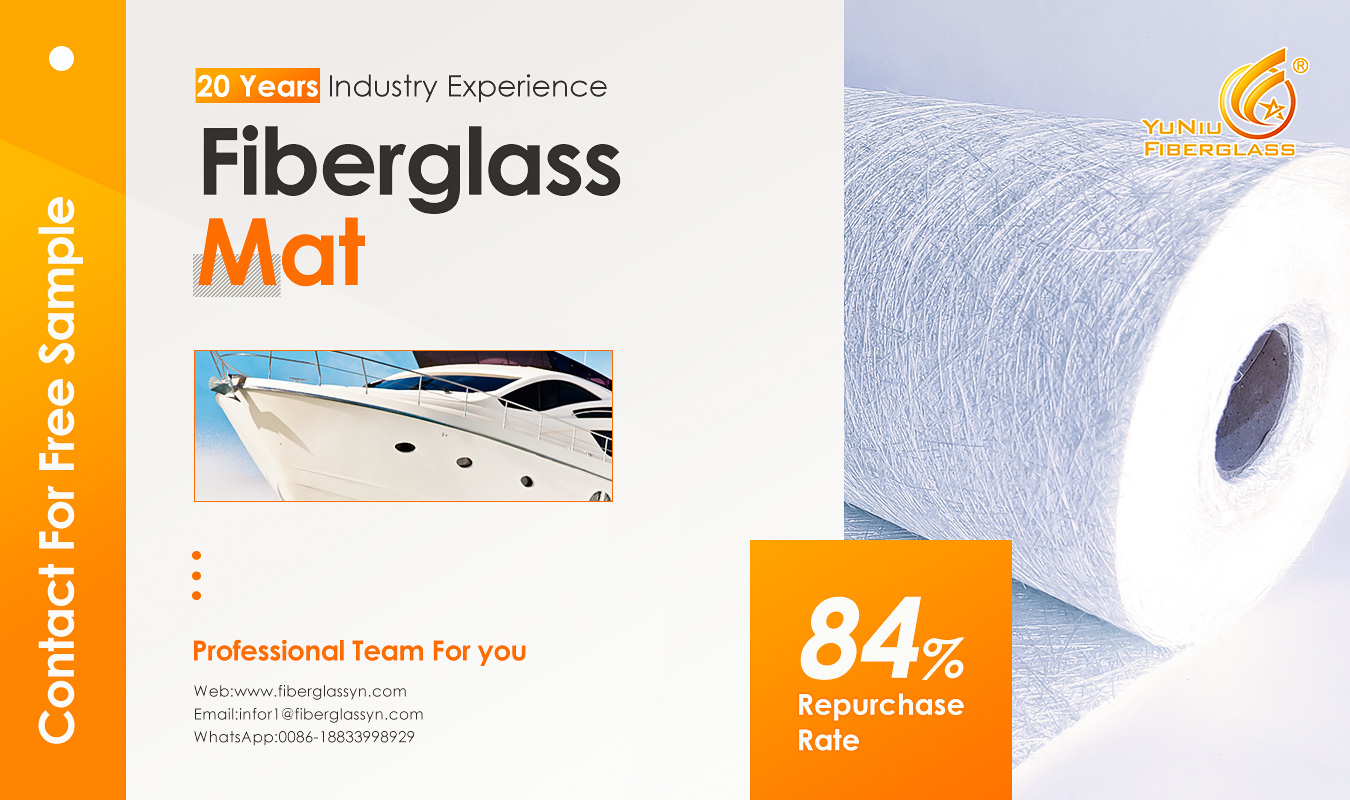Email: info@hdfiberglass.com Whatsapp: +86 15200033566
Views: 0 Author: Site Editor Publish Time: 2024-02-26 Origin: Site








In the world of fiberglass materials, the choice between using fiberglass mat or fiberglass cloth often sparks debate among manufacturers and engineers. Each has its own set of advantages and applications, making the decision a crucial one for many projects.
When it comes to fiberglass applications, one must consider several factors: the specific requirements of the project, the desired properties of the final product, and the manufacturing process itself.
Fiberglass mat, characterized by its random orientation of fibers, offers excellent strength and uniformity. This makes it ideal for applications requiring consistent mechanical properties, such as boat hulls, automotive parts, and construction materials. The mat's ability to conform to complex shapes without fraying or tearing adds to its appeal in various manufacturing processes.

On the other hand, fiberglass cloth, with its woven structure, provides greater control over fiber orientation. This results in enhanced tensile strength and stiffness in specific directions, making it suitable for applications where directional strength is critical, such as aerospace components, sporting goods, and composite structures.

However, the choice between fiberglass mat and cloth ultimately depends on the specific requirements of the project. Are you prioritizing strength, flexibility, or ease of handling? Do you need uniformity or directional strength? Answering these questions will guide you towards the most suitable material for your application.
Several factors influence the decision between fiberglass mat and cloth. Project requirements play a significant role, dictating the desired mechanical properties, surface finish, and ease of application. Manufacturing process considerations, such as resin compatibility and mold complexity, also impact the choice.
Cost is another crucial factor. While fiberglass mat is generally more affordable due to its simpler manufacturing process, fiberglass woven roving offers greater versatility and control, potentially justifying its higher cost for certain applications.
In addition to the primary factors mentioned above, environmental conditions must be taken into account. Will the final product be exposed to harsh weather, chemicals, or UV radiation? Understanding the long-term durability requirements is essential for selecting the appropriate material.
Ease of handling during the manufacturing process is another consideration. Fiberglass chopped strand mat, with its loose fibers, may be more challenging to work with compared to the structured weave of fiberglass cloth, especially in intricate or vertical applications.
In conclusion, the decision to use fiberglass mat or cloth depends on a variety of factors, including project requirements, manufacturing process, cost considerations, environmental conditions, and ease of handling. Ultimately, selecting the right material is crucial to achieving the desired performance and durability of the final product.
Is it better to choose emulsion or powder for glass fiber chopped strand mat?
Building Stronger Ships: Application Cases And Technical Advantages of Yuniu Chopped Glass Fiber Mat
Yuniu Fiberglass Chopped Strand Mat - Helping Your Project To Success
Corporate Visual Identity of Hebei HaiDing Fiberglass Manufacturing Co., Ltd.
What does the price increase of fiberglass products (chopped strand mat) mean?
Fiberglass Materials for Electrical Insulation and Electronics Applications